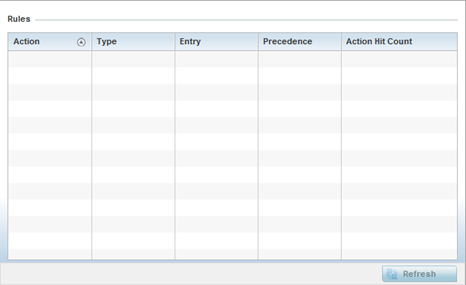AP Application Policy
About this task
When an application is recognized and classified by the WiNG application recognition engine, administrator defined actions can be applied to that specific application. An application policy defines the rules or actions executed on recognized HTTP (Facebook), enterprise (Webex) and peer-to-peer (gaming) applications or application-categories.
For each rule defined, a precedence is assigned to resolve conflicting rules for applications and categories. A deny rule is exclusive, as no other action can be combined with a deny. An allow rule is redundant with other actions, since the default action is allow. An allow rule is useful when wanting to deny packets for a category, but wanting to allow a few applications in the same category to proceed. In such a cases, add an allow rule for applications with a higher precedence then a deny rule for that category.
Mark actions mark packets for a recognized application and category with DSCP/8021p values used for QoS. Rate-limits create a rate-limiter applied to packets recognized for an application and category. Ingress and egress rates need to be specified for the rate-limiter, but both are not required. Mark and rate-limit are the only two actions that can be combined for an application and category. All other combinations are invalid.




